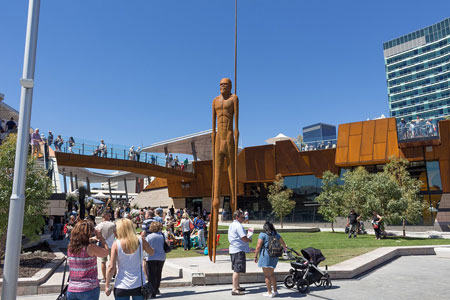City of Cockburn Japanese Translation Services
Perth Translation Services » Perth » City of Cockburn Translation Services » City of Cockburn Japanese Translation Service
City of Cockburn Japanese Translation Services
Get fast and professional translation services in City of Cockburn. Our Japanese translators provide translation of all types of documents. These include confidential legal, financial and migration document translations.
Upload Document For Translation

City of Cockburn
The City of Cockburn is a local government area in the southern suburbs of the Western Australian capital city of Perth about 8 kilometres (5 mi) south of Fremantle and about 24 kilometres (15 mi) south of Perth's central business district. The City covers an area of 167.5 square kilometres (64.7 sq mi) and had a population of over 104,000 as at the 2016 Census.
City of Cockburn History
Cockburn is named after Cockburn Sound, which was named in 1827 by Captain James Stirling after Admiral Sir George Cockburn. Sir George was born in London in 1772 and was a renowned British naval officer, eventually becoming Admiral of the Fleet and First Sea Lord. He served under Horatio Nelson during the war with France, but came to public attention and was granted his knighthood for his service in the War of 1812, in particular for the burning of Washington in 1814. It was he who took Napoleon to exile on the island of Saint Helena after the Battle of Waterloo in 1815.
In 1871, the Fremantle Road District was created under the District Roads Act 1871 to cover the area to the south and east of Fremantle, and the Fremantle Road Board was created to manage it. The original District was bounded on the north by the Swan River from Fremantle to the mouth of the Canning River; on the east by a line from Bull Creek to the junction of what is now the intersection of the Albany and South Western Highways in Armadale; on the south by a line from Armadale to, and including the Rockingham townsite; and to the west by the Indian Ocean.
City of Cockburn Suburbs
Atwell, Aubin Grove, Banjup, Beeliar, Bibra Lake, Cockburn Central, Coogee, Coolbellup, Hamilton Hill, Hammond Park, Henderson, Jandakot, Leeming, Munster, North Coogee, North Lake, Rottnest Island, South Lake, Spearwood, Success, Treeby, Wattleup, YangebupAbout the Japanese Language
Japanese (日本語) "Nihon-go" in Japanese) is the language spoken in Japan, in East Asia. Japanese uses three separate writing systems: hiragana, katakana, and kanji. The first two are phonetic systems (writing that shows the pronunciation of Japanese words), and kanji is the Japanese variation of Chinese characters (which show the meaning of Japanese words). The three systems are used interchangeably, and all three systems can often be found in the same sentence. The three systems are each reserved for different purposes.
Little is known of the language's prehistory, or when it first appeared in Japan. Chinese documents from the 3rd century recorded a few Japanese words, but substantial texts did not appear until the 8th century. During the Heian period (794–1185), Chinese had considerable influence on the vocabulary and phonology of Old Japanese. Late Middle Japanese (1185–1600) included changes in features that brought it closer to the modern language, and the first appearance of European loanwords. The standard dialect moved from the Kansai region to the Edo (modern Tokyo) region in the Early Modern Japanese period (early 17th century–mid-19th century). Following the end in 1853 of Japan's self-imposed isolation, the flow of loanwords from European languages increased significantly. English loanwords, in particular, have become frequent, and Japanese words from English roots have proliferated.
Japanese is an agglutinative, mora-timed language with simple phonotactics, a pure vowel system, phonemic vowel and consonant length, and a lexically significant pitch-accent. Word order is normally subject–object–verb with particles marking the grammatical function of words, and sentence structure is topic–comment. Sentence-final particles are used to add emotional or emphatic impact, or make questions. Nouns have no grammatical number or gender, and there are no articles. Verbs are conjugated, primarily for tense and voice, but not person. Japanese equivalents of adjectives are also conjugated. Japanese has a complex system of honorifics with verb forms and vocabulary to indicate the relative status of the speaker, the listener, and persons mentioned.
Japanese has no genetic relationship with Chinese, but it makes extensive use of Chinese characters, or kanji (漢字), in its writing system, and a large portion of its vocabulary is borrowed from Chinese. Along with kanji, the Japanese writing system primarily uses two syllabic (or moraic) scripts, hiragana (ひらがな or 平仮名) and katakana (カタカナ or 片仮名). Latin script is used in a limited fashion, such as for imported acronyms, and the numeral system uses mostly Arabic numerals alongside traditional Chinese numerals.
City of Cockburn Japanese Translator Services
Japanese translator for certified translation services:
- Japanese driving license translation
- Japanese financial translation and bank statement translations
- Japanese birth certificate translation
- Japanese marriage certificate translation
- Japanese name-change certificate translation
- Japanese degree translation
- Japanese diploma translation
- Japanese school transcript translation
- Japanese passport translation
- Japanese police report translation
- Japanese police check translation
- Japanese personal letters and cards
- Japanese utility bill translations
- Japanese death certificate translation
Perth Translation provides fast and affordable Japanese translation services in the City of Cockburn for all types of personal documents by NAATI translators.
Languages Translated
- Arabic translation service
- Czech translation service
- Chinese translation service
- Croatian translation service
- Danish translation service
- Dutch translation service
- French translation service
- Finnish translation service
- Greek translation service

